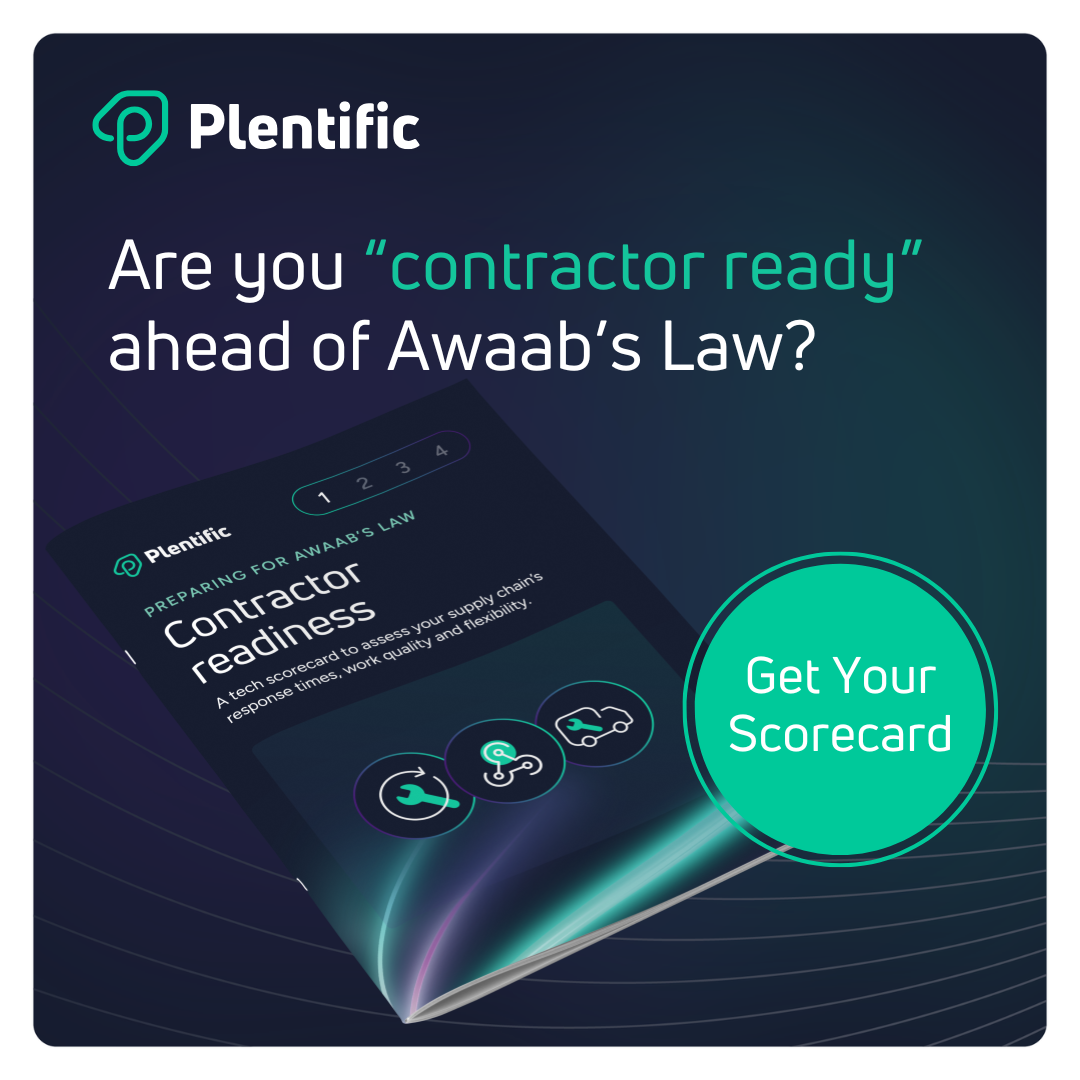From 27 October 2025, landlords will face comprehensive legal obligations under Awaab’s Law to respond to significant damp and mould hazards, as well as all emergency hazards, within the stipulated timeframes.
These timeframes are no longer best practice, they are statutory, making the consequences of failure severe, including legal enforcement, tenant compensation, and mandated decants. Ultimately, it’s the capacity and flexibility of a provider’s contractor network that will determine whether these deadlines are met or missed.
The Compliance Risk In The Supply Chain
Many providers have made progress modernising their systems and resident services, but contractor supply chains often remain the most brittle link in the compliance chain.
Having contractors “on the books” is not the same as being contractually, operationally, and digitally ready to deploy them against strict response timelines. Under Awaab’s Law, Day 0 of the applicable timeframe begins the moment a hazard is reported - not when it's triaged or manually passed to a contractor – which makes it imperative to have access to the right people for the right job at the right time. Especially for the resolution of emergency hazards, where the investigation and resolution of the issue has to happen in the same 24 hours.
In addition, the pressure of high reporting volumes and strict deadlines means that providers without a fast, scalable, tech-enabled contractor model risk falling behind early in the process.
What Awaab’s Law Demands of Contractor Operations
As noted earlier, contractor readiness is about more than availability. It requires:
Access to a pool of qualified, pre-vetted contractors with coverage across all relevant trades - particularly for damp and mould resolution - is essential, ideally supported by contractual agreements that prioritise your repair jobs.
Real-time allocation and scheduling tools to meet legalised response times.
Audit trails showing when work was raised, assigned, attended, and completed.
Transparent resident communication throughout the repair process.
Ideally, providers will also account for resident choice and trust. In one Plentific case study, a resident insisted on a specific contractor due to previous positive experience, which in turn delivers higher tenant satisfaction and reputational value for the provider.
Plentific’s Contractor Solution in Practice
Plentific supports housing providers with a model that is responsive, adaptable, and aligned with Awaab’s Law. Providers can:
Access thousands of pre-vetted contractors via Plentific's Marketplace and Bespoke Sourcing services; flexible sourcing by trade and geography
Post and schedule jobs in real time; use automated SLA-setting and performance monitoring tools
Reroute jobs dynamically based on contractor availability, urgency, or specialist requirements
Track performance using built-in analytics, review scores, workload indicators, and resident feedback
Maintain transparent communications with in-app messaging, email/SMS updates, and logged correspondence
Onboard contractors through structured flows, including credential and insurance checks and compliance documentation
Define SLAs at the work order level and use risk-based categorisation, escalation tools, and resident vulnerability flags to tailor responses
Case studies from Lumensol/Wandle and SNG show an average project completion time of 13 calendar days, and a first-time fix rate of 94%.
Conclusion
Contractor readiness isn’t a siloed issue. It cuts across compliance, resident experience, digital capability, and long-term viability. With the introduction of mandated response timeframes now imminent, providers relying on reactive operating models are likely to fall short - risking financial and reputational damage that many simply cannot absorb.
The time to evaluate, mobilise and strengthen contractor operations is now. Download the Contractor Readiness Scorecard to assess your current position and see how your organisation compares.


